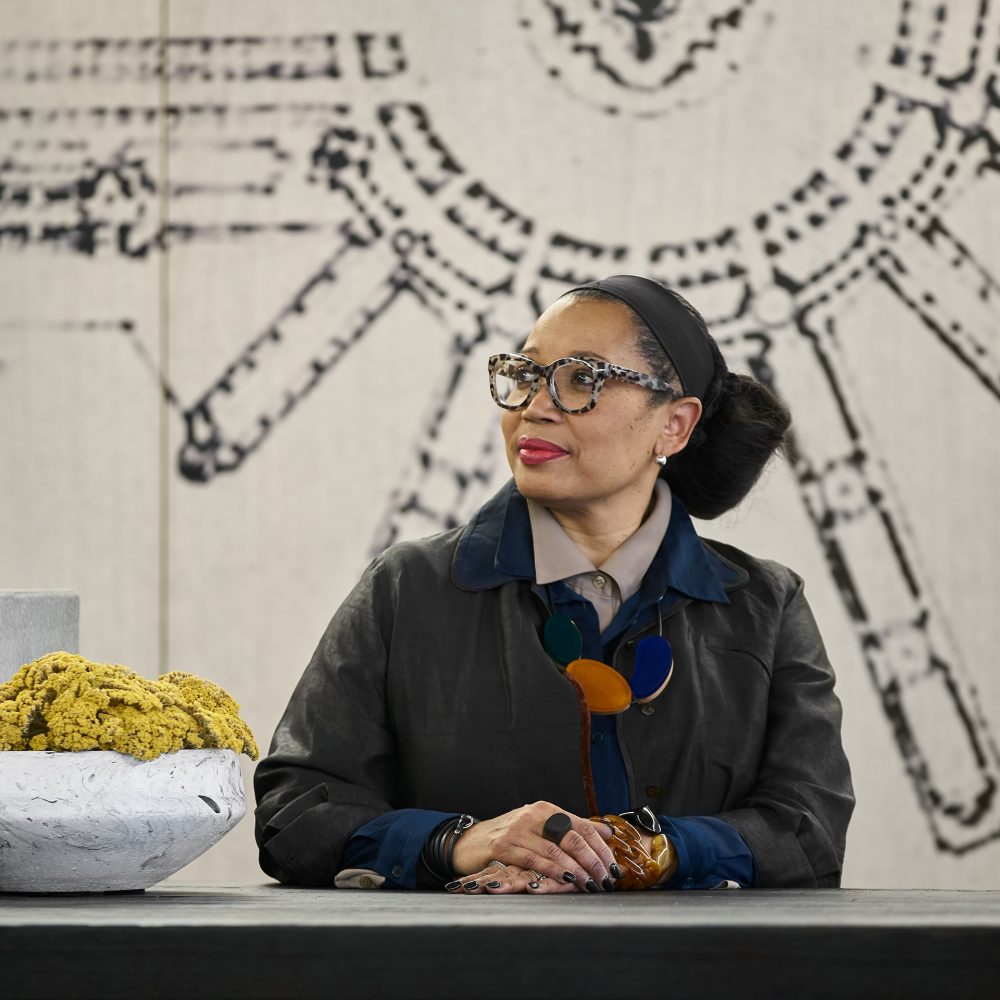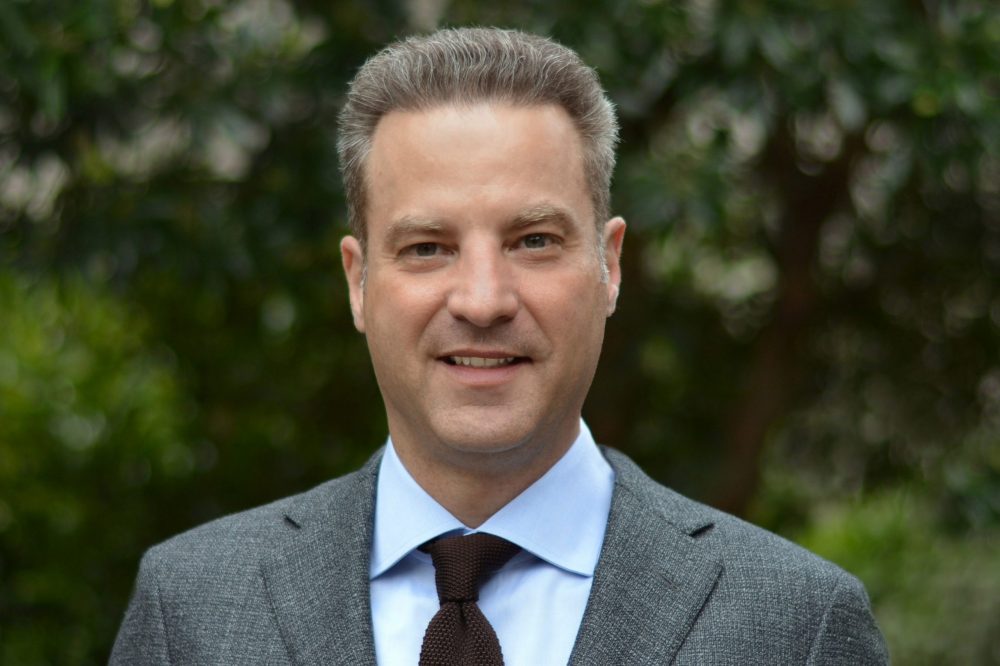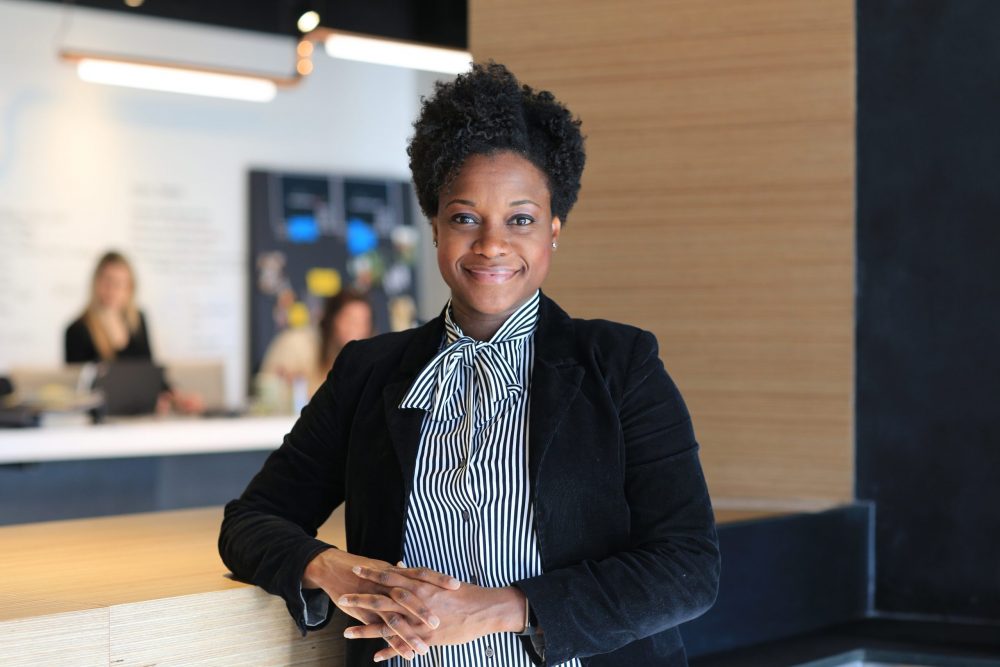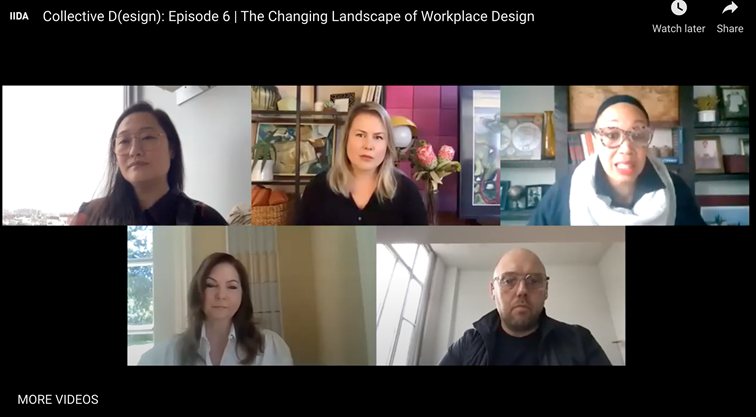WDM connects with IIDA’s Cheryl Durst, Sascha Wagner, Ronnie Belizaire, and Angie Lee for a pulse-check and insight on what’s next for the design industry. Read part two of the conversation here.
This month, we mark the one-year anniversary of the World Health Organization declaring the COVID-19 outbreak a pandemic. While it’s not a milestone to celebrate, it is one to give pause and reflect on what the past year has brought. It certainly seems that no one has escaped the effects of this pandemic on our lives, both personally and professionally. In order to offer perspective to our readers, we connected with the leadership of IIDA including EVP and CEO, Cheryl Durst, and International Board Presidents Sascha Wagner, Ronnie Belizaire, and Angie Lee. Given their interactions with the IIDA membership that cuts across local, national, and international boundaries, we knew this leadership group was a good place for a pulse-check. Read our conversation below for heartfelt observations and creative ideas to help move us forward as we navigate to what’s next!

WDM: Wow! What a year! Across the A&D community, there has been much upheaval, but also incredible resiliency. What do you think are the main reasons our community has been able to pivot and keep going?
Cheryl Durst: We say it all the time — design is, at its most elemental level, an act of optimism. Designers possess an optimistic, creative spark; and that ability to create allows us to see a way forward, to imagine the future, to go over, under or through obstacles. No matter the challenge, context, or climate, through design we imagine and create a world no one has ever seen before.
I think that optimism is key, but I also think that our ability to connect, while prodigiously challenged by this pandemic, is incredibly strong. Throughout this period, we have seen our community come together to tackle not just issues of the pandemic, but issues of social justice, mental health. And the solutions have been pure inspiration — from connecting with elders to tap into the strength of personal heritage; to acting as a sounding board for junior staffers in our firms; to setting up a crafting circle among friends in the design community. That human focus and innate creativity are always moving us forward.

Sascha Wagner: Design is deeply rooted in empathy, so it’s no surprise that A&D professionals are using their ability to listen as well as their technical problem-solving skills during the pandemic. We all want to improve the human experience. This aspiration is also at the heart of what binds our community together. We may be competitors in business, but we are all on the same mission to make a positive contribution to our world through design – to elevate the human experience.

Ronnie Belizaire: Designers are natural problem-solvers and seeking solutions to complex physical challenges are what we do… I believe the main reason the A&D community has remained resilient throughout the pandemic is because we are collectively trying to solve for the “new normal” which is quenching our natural curiosity and keeping us focused on what’s next rather than what we’ve lost.

Angie Lee: This isn’t our first rodeo when it comes to recessions and downturns. Granted, a global pandemic punctuated with deeply profound social justice issues and a looming climate crisis is unlike previous crises. However, many of us are able to pull from a well of resiliency that we have accumulated throughout the course of our careers and from the community we have built within the industry.
WDM: Can you think of the three most interesting things you have seen over the course of the pandemic responses within the design community?
Angie Lee: The tenor of conversation and discourse has radically evolved, the appetite for accountability is no longer just conceptual, and lastly, designers are seeking a more profound outlook on the power of design.
People are preparing for some discomfort because they want to say the things that need to be said; they are ready to commit to designing for social justice, and equitably gendered spaces and professional practice. We are also scrutinizing the way the building industry is contributing to environmental degradation with a more appropriate level of alarm that should change the fundamental reasons for building. The option to tune out a greater level of responsibility and think any of our projects are exempt from addressing the impact they have on the climate or questioning their support of the status quo is a menu of false choices.
The critical interconnection between sustainability, racism, gender, and identity requires a higher level of accountability to identify and solve for all of them instead of siloing them as separate issues with greater or lesser weight. Bringing people into the room who haven’t historically been let in, seating them at the table, and creating space to voice crucial stories that rebalance a skewed system of values that centers male, Eurocentric design principles is just the beginning. I’m encouraged to see that more firms are trying to put into motion strategies to unlearn and relearn who we are designing for and how to recalibrate the purpose of design as a mechanism to solve for the long haul.
Design as a continuum is perhaps the most interesting thing for me to witness personally.
Design as a continuum is perhaps the most interesting thing for me to witness personally. The 24-hour experience cycle that tracks us bedside to curbside to being side by side with colleagues allows the design industry to combine compatible disciplines. Instead of staying in our traditional lanes, allowing our curiosity and full creative potential to be enriched and influenced by behavioral, cognitive, and epidemiological scientists and research is changing our understanding of the power of design and what is possible. I think it’s essential that we realize as an industry how vital it is to cross-pollinate and innovate especially since we’ve been hacking into existence the worlds of work, education, fitness, and amateur broadcasting inside the confines of our homes and will likely be carrying those habits back to the office and school.
Ronnie Belizaire: A reckoning of consciousness within the collective A&D community to face the inconvenient truth of systemic racism in this country that has led to a lack of racial diversity in the profession and the clientele who are able to take advantage of professional design services. The humanization of our colleagues and ourselves as we were forced to bring our authentic selves to the virtual work platform because we had no choice. The revelation that flexibility in how, when and where design professionals work is paramount and will now and forever be part of the dialogue as employees and employers move into the “new normal” for work.
Sascha Wagner: I am encouraged by how we’ve all been sharing our research and solutions freely, from COVID-response retrofit toolkits to product ideas, to predictions about future work models. In addition, there is a renewed focus, not only by design professionals, but driven by our clients, on the critical issues we are collectively facing: Human health, wellbeing, and safety, access and equity in the built environment and our profession, and our industry’s massive impact on the environment. This broader dialog signals what I hope is a paradigm shift towards a more purpose-driven and conscientious approach to design. We are all trying to solve the same challenges and it feels like a collective effort across the industry.
Design is personal, and everything about this time has taught us again how important it is to truly address human needs in an equitable way…
Cheryl Durst: We’re exploring the importance of place in new ways. The consensus is that place remains incredibly important and that there is no substitute for the ability to convene. But we’re recognizing that there’s a tension between longing to be together and the discomfort some may feel about physical closeness. Designers are working out the delicate balance between those two impulses.
We’ve renewed our focus on humanity. Design is personal, and everything about this time has taught us again how important it is to truly address human needs in an equitable way — from the need to be seen, recognized, and understood to the need to feel safe. As designers, we’re doubling down on what it means to address all of those things.
We’ve let creativity have a field day. I know that I’m surrounded by creative people but getting to peek down the fascinating avenues those creative impulses have taken during a time when our expressions were, in theory, limited, has been amazing, inspiring, and affirming.

WDM: The hard truth is that we probably lost many designers due to layoffs and furloughs, as projects went on hold or were canceled. Do we have any way of calculating the loss and what do you think that means to the profession?
Cheryl Durst: It’s important that we don’t underestimate the impact the shutdown has had on design firms and individual designers. These have been tough times. It is interesting to note, however, that there are nuances to this landscape that may be easy to miss when we’re in the thick of things. For instance, some job loss has been related to timing, with a contraction early in the pandemic as firms braced for an economic downturn; but since then, two things have happened.
First, we are seeing that work has rebounded a bit with increased consumer optimism. Second, designers, true to their inherent ingenuity, have found opportunities to expand their career options; teaching, becoming workplace strategists for manufacturers, even starting new firms. Firms have broadened their offerings to meet new client needs. These shifts will create new avenues for designers to pursue.
I believe there is a basis in those insights for well-founded optimism. It’s important to direct our focus to our next steps and point our gaze to the future we will build together. At IIDA, we’re committed to a strong focus this year on programming and resources that can help our members build back and prepare to meet the market with new energy, skills, and a robust community of support. Never doubt the overwhelming power of a strong, creative community.
Editor’s note: For example, check out this important IIDA conversation featuring Cheryl and Angie:
Sascha Wagner: In every downturn, many firms, unfortunately, lose valuable talent, including individuals who leave the profession altogether. This creates gaps in certain skill and experience levels that are felt for years to come when it seems a whole generation of designers has “gone missing”. For those focusing on workplace design, it can be difficult to remain committed when the public discourse, however misguided, is about how we may not even need offices anymore. I believe the long-term detriments of isolation and of blurring boundaries between home and work life will become more widely known, and we will pivot back towards places to gather and collaborate in person. With an increased focus on wellbeing, this means opportunities to design a new generation of human-centric spaces. Hopefully, this will allow many of our colleagues to return to work.
Angie Lee: I agree that real conversations are important – we don’t seem to have enough of them, but I don’t know how to begin to calculate the loss of so much talent over the past year. I can only hope that we can bring people back with a renewed urgency that will help us tackle sustainability as it is intertwined with nearly every other issue that is currently plaguing the economy, public health, and the future of our industry. There is so much to re-purpose, redesign, and rethink. I believe none of us have been unscathed by the negative impact of so much loss of life, lack of justice, and the seismic shift in the landscape of knowledge that we will largely be unable to accept ‘best practices’ that fail to actively strive for a just future in the design and construction industry. If the profession is not fundamentally galvanized into a sharper tool for the business of positive change, it will be nothing short of devastating.

